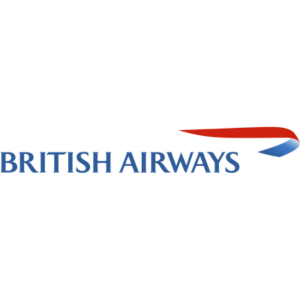ON-TIME PERFORMANCE FLIGHT DATA
DISCOVER THE MOST PUNCTUAL GLOBAL AIRLINES

#1 Hainan Airlines
On-Time Performance: 88.65%
Canceled Flights: 0.62%
Total No. of Flights: 21,863

#2 China Southern Airlines
On-Time Performance: 87.78%
Canceled Flights: 0.49%
Total No. of Flights: 64,369

#3 SAS Scandinavian Airlines
On-Time Performance: 87.06%
Canceled Flights: 0.89%
Total No. of Flights: 21,588

#4 China Eastern Airlines
On-Time Performance: 85.48%
Canceled Flights: 1.06%
Total No. of Flights: 67,951

#5 British Airways
On-Time Performance: 84.3%
Canceled Flights: 0.56%
Total No. of Flights: 24,445

#1 Aeromexico
On-Time Performance: 91.67%
Canceled Flights: 0.05%
Total No. of Flights: 15,223

#2 Copa Airlines
On-Time Performance: 88.92%
Canceled Flights: 0.27%
Total No. of Flights: 11,586

#3 Shandong Airlines
On-Time Performance: 87.5%
Canceled Flights: 0.37%
Total No. of Flights: 16,068

#3 Wizz Air
On-Time Performance: 86.72%
Canceled Flights: 0.16%
Total No. of Flights: 11,740

#5 Xiamen Airlines
On-Time Performance: 85.63%
Canceled Flights: 0.7%
Total No. of Flights: 18,906
November 2025
Full Airline Rankings
WHAT IS OTP?
On-time performance (OTP) data is critical to understanding the performance of airlines and airports.
Across the aviation industry, an airline arrival occurring within 15 minutes of the scheduled time is considered on-time.
OTP is a crucial key performance indicator for airlines and airports, it helps to gauge their efficiency and also has the potential to set them apart from their competitors.
UNDERSTANDING THE DATA
On-time performance data shows the percentage of flights that have arrived (for airlines) or departed (for airports) on-time.
A flight is considered on-time if it has departed or arrived within 15 minutes of the schedule.
The higher the percentage, the better the OTP score.
Cancellations are included in our data and are considered not on-time.
For an airline's OTP to be published, OAG requires access to flight status data for at least 80% of all scheduled flights operated, and to be ranked they must operate a minimum of 1,500 flights that month.
Not included? Contact us and we will be happy to discuss our requirements.
DON'T MISS AN UPDATE
SIGN UP FOR MONTHLY OTP NOTIFICATIONS
Receive a notification every month when we publish the top 20 airline and airport OTP rankings.
Frequently asked questions
HOW IS AIRPORT OTP CALCULATED?
Airport on-time performance is based on actual gate departure times. Flights that depart within 15 minutes of the schedule are considered on-time. Departing 15 minutes or more after the scheduled time is considered not on-time.
HOW IS AIRLINE OTP CALCULATED?
Airline on-time performance is based on actual gate arrival times. Flights that arrive within 15 minutes of the schedule are considered on-time. Arriving 15 minutes or more after the scheduled time is considered not on-time.
WHY IS OTP IMPORTANT?
OTP is valuable for operations management; delays affect productivity and lead to increased costs. Flight punctuality is also of the highest importance to the traveler, poor punctuality will mean that flights arrive at their gate late or depart late – which could lead to passengers missing connecting flights.
Airline on-time performance is based on actual gate arrival times. Flights that arrive within 15 minutes of the schedule are considered on-time. Arriving 15 minutes or more after the scheduled time is considered not on time.
OTP has a critical role to play in airline operations management. Delays affect productivity and cost airlines millions of dollars every year. Flight punctuality is also of the highest importance to the traveler, poor punctuality will mean that flights arrive at their gate late or depart late – which could lead to passengers missing connecting flights. Many airlines have embedded OTP as a KPI using this to measure and evaluate processes and identify improvements to their operations.
Airlines and airports can analyze operational processes with different stakeholders e.g. ground handling and catering companies, and use OTP within their systems to support better collaboration and efficiency. They can understand how operations at different locations perform to understand and learn from best practice.
Many airlines choose to use OTP as one of their performance measures for staff, encouraging teams to work together towards the efficient turnaround of aircraft.
OTP is a valuable metric for airlines and is an outward demonstration of reliability which can affect brand loyalty and ticket sales. Customer satisfaction is influenced by customer expectations and a flight that arrives after the scheduled arrival time can be a stressful experience for passengers. Managing expectations is necessary and On-Time Performance flight and airline statistics provides an external verification about flight reliability, so passengers can be better informed regarding the probability of their flight arriving on-time.
Poor punctuality means flights arrive at their gate late or depart late, with consequences for other flights planning to use those gates. This results in extended time on taxiways, leading to unnecessary fuel consumption. Additionally, passengers may miss their connecting flights.
Flight punctuality also impacts airline crews; if a flight is delayed, the crew might be unable to operate their subsequent flight, potentially causing further cancellations or delays.
In Europe, where passengers are entitled to compensation for late flights, there is also direct cost associated with poor OTP.
It takes hard work and attention to detail for an airline to operate truly reliable schedules. Achieving a high level of on-time performance is a complex task with a myriad of variables, not all of which lie within the control of an airline. Conversely, poor OTP is often a sign of inefficiencies and weak management control of operations.
For those airlines which succeed the rewards are tangible:
- More flights operating according to the schedule reflects an efficient airline.
- Inefficiencies - appearing as late flights and missed connections - cost airlines money for fuel, additional ground handling, staff payments and passenger compensation.
- Passengers, and especially regular fliers, reward reliability with brand loyalty and repeat business.
- Fewer delays and missed connections enhance customer satisfaction.
- Close partnerships with airports on OTP is a pre-requisite for the smooth operation of a hub airport.
Measuring On-Time Performance can be challenging. With millions and millions of flight records, and real-time updates of hundreds of flights at airports around the globe every day, Any measure that can be applied across companies working in the same sector is valuable as a benchmark for performance.
Probably most people in the industry would accept that an OTP of 80% or above is pretty good. That’s 4 in 5 flights arriving within 15 minutes of their scheduled arrival time. The very best airlines and airports succeed in punctuality closer to 90% - but they remain the exception rather than the rule.
Going much beyond 80% of flights on-time will be easier for some than for others. Operating at congested airports and in congested airspace will make it harder. And as climate change begins to create more chaotic weather conditions, and storms in particular, keeping to schedule will be harder.
Achieving OTP well above 80% requires focus but there may be a point where striving towards ever higher OTP may be detrimental to the bottom line. The benefit of incremental improvements may be outweighed by the cost of achieving them.
One of the major talking points of airline On-Time Performance statistics is the practice of ‘padding schedules’, where the time between the scheduled departure and the scheduled arrival have increased as a means of achieving higher OTP.
In practice, determining the correct schedule times for a flight are not straightforward. Build in too much padding so that flights are always on-time and you might lose one aircraft rotation each day, which has a major impact on the revenue generated by the asset. Build in too little padding and flights may regularly be late, causing a knock-on effect on every subsequent rotation of that aircraft for the rest of the day.
While schedule padding could be construed as airlines scheduling to make performance look better, there is also a case where congestion actually allows a passenger’s expectations to be met. So schedule padding is not a bad thing, the question we should be asking is are airlines successfully managing their customers’ expectations?
The idea of having fifteen minutes as a measurement is a hot talking point in the world of OTP. For many in the industry, it is a case of not having enough leeway needed in order to provide a streamlined service, whereas some countries, such as China which uses 30 minutes as its definition of late, have chosen to adopt a different rule.
We explore this question about the right definition of late in more depth here.
Increasingly airlines and airports are focusing on the detail of achieving strong OTP. Some of the key areas to improve OTP include:
- Collaborative decision making (CDM).
- Good quality metrics and timely dashboards which ensure problems are addressed early.
- Build OTP into performance targets, either with contractors through service agreements, or for staff through bonuses.
- Use of predictive tools is also becoming more commonplace so that data collected as passengers pass through an airport can be used for planning staffing levels or identifying passengers who are late.
Whatever approach an airline or airport takes to managing punctuality, there are no quick fixes. Achieving high levels of punctuality is a complex task and those with high OTP deserve to be congratulated.
OTP is tracked through multiple sources including directly from airlines, airports, control authorities and others involved in the wider travel eco-system.
The OTP data is updated each month, usually during the second week. You can sign up to receive notifications by clicking on the link below.
Sign up for notificationsTo be included in OAG's rankings airlines must reach a minimum size criteria of 1500 flights operated in the current month and a coverage qualification. If you want to discuss our requirements in more detail, click the link below.
Find out moreFor Media:
- Attribution: Proper credit must be given to OAG, and their website, www.oag.com, should be included.
- Proper Citation: To be used with all OAG provided data or analysis, as noted here:
- OAG, global air travel data provider
- Citations for data, analyses or insights: “… according to OAG data/analysis/insights”
- Specific data used in charts: “Source: OAG data filed (include date)”
For Non-Media
- Permission Requirement: The data should not be copied in part or its entirety or in its original format without explicit permission from OAG.
NORTH AMERICA OTP
Discover on-time performance data for airlines and airports in North America.


